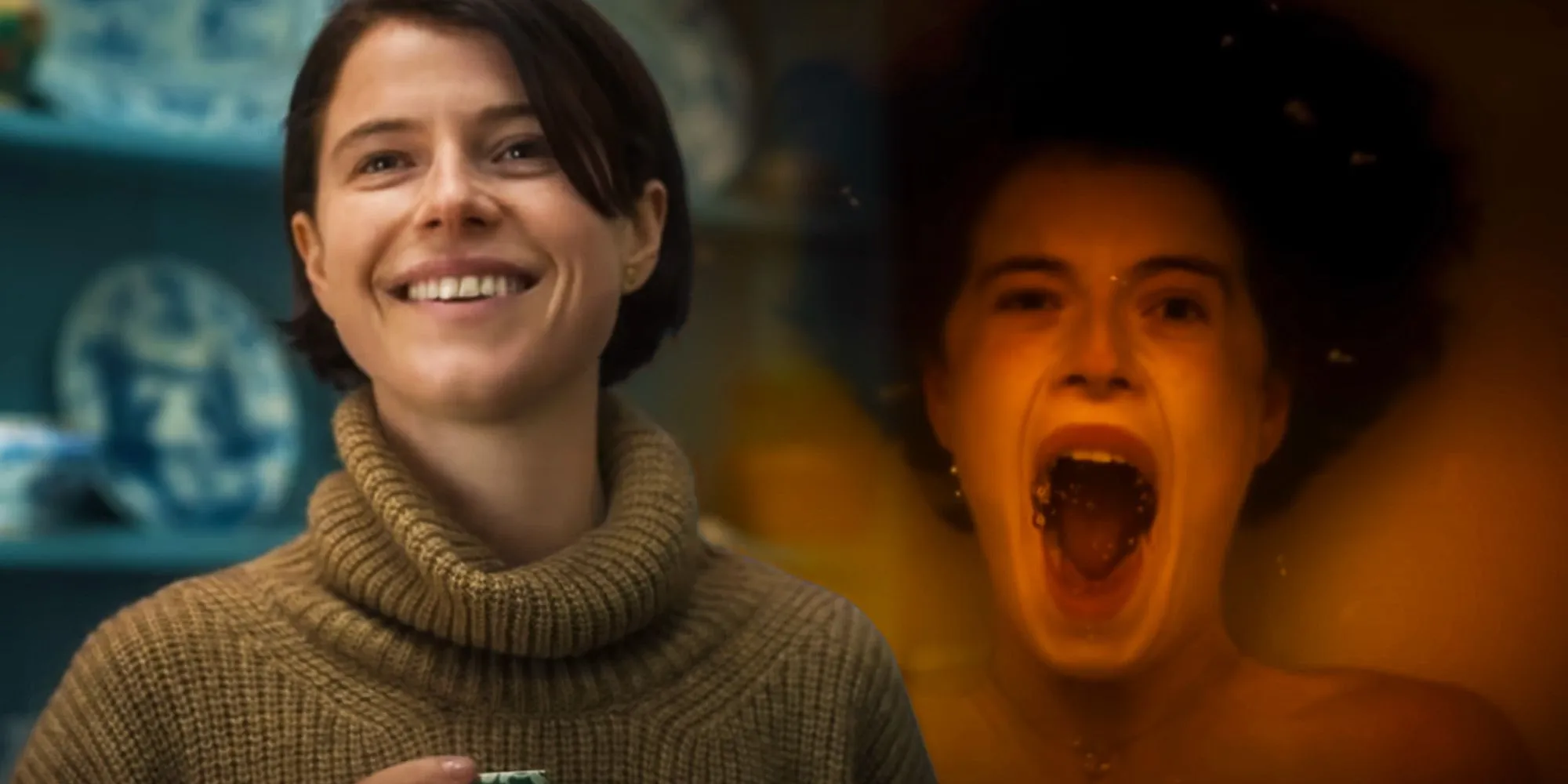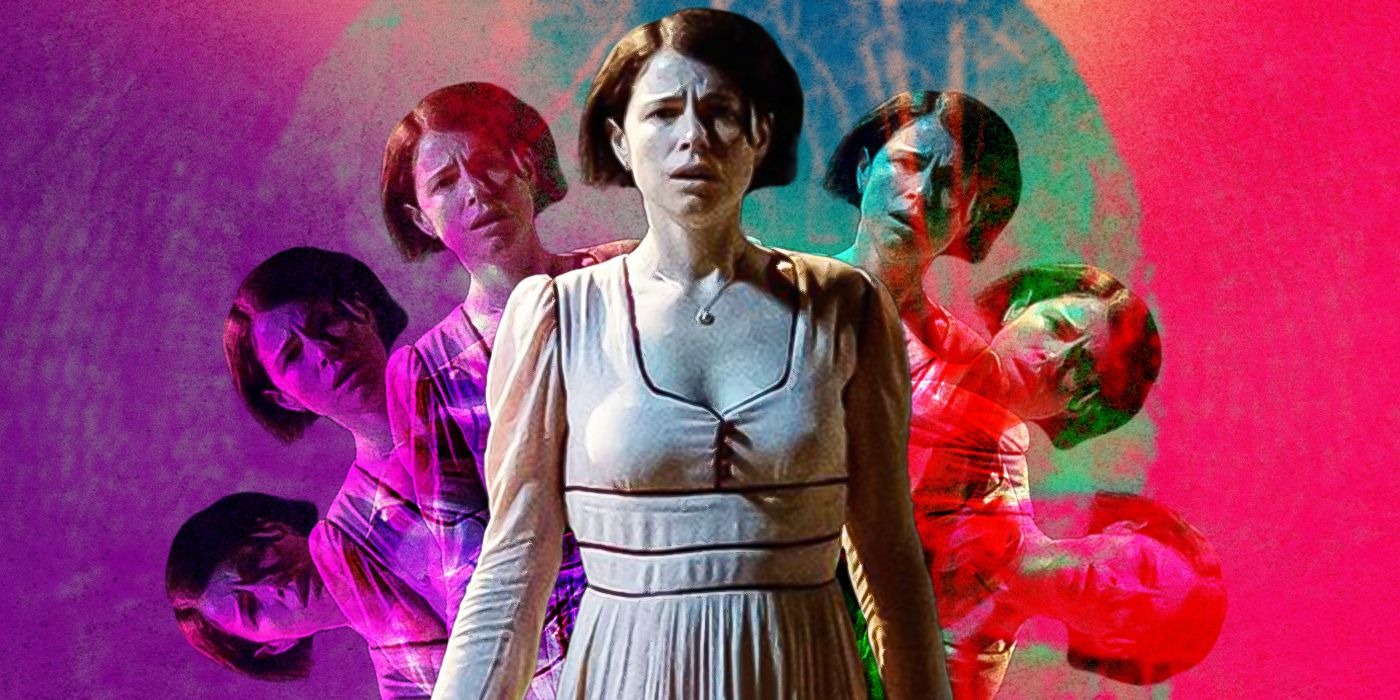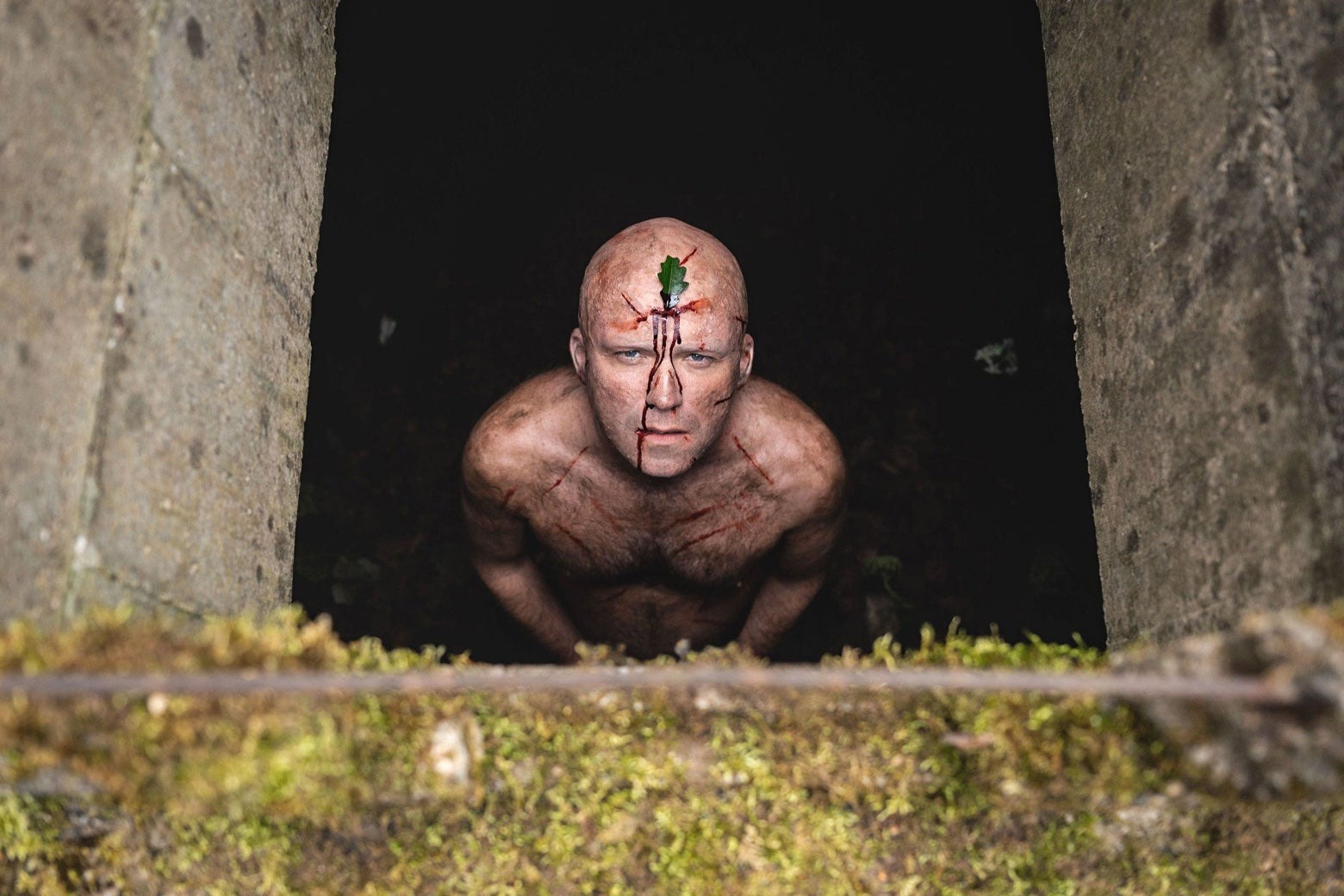The film opens with a fleeting scene, where Harper (Jessie Buckley) and her husband James (Paapa Essiedu) are seen mid-argument, drenched in a harsh orange light, with Harper’s nose bleeding. Later, it is revealed that Harper has expressed her desire for a divorce after a year of marriage.
James, in an attempt to salvage the relationship, resorts to various emotional tactics, including begging, guilt-tripping, and even gaslighting, before threatening to take his own life. When he physically assaults Harper, she forces him out, declaring that she doesn’t care whether he lives or dies.

The next time she sees him, he is visible through their living room window, falling to his death from a great height (the cause of his fall, whether a jump or an accident, is left unclear). In a surreal, dream-like sequence, Harper discovers his mangled body outside, his ankle twisted unnaturally, his head bloodied.
And one arm was gruesomely impaled by a spiked railing. These specific injuries will be revisited later in the film’s events.
All the Gory Allegories
Harper’s personal story forms a crucial part of understanding the movie’s conclusion, but there is also a broader commentary on patriarchal violence. The film teems with references to original sin, the belief that every person carries the weight of Adam and Eve’s transgression when Eve ate the forbidden fruit in the Garden of Eden.
This idea becomes literal when Harper consumes an apple from a tree in the front yard after arriving at the country house. Geoffrey warns her, saying, “Mustn’t do that,” before jokingly adding, “Forbidden fruit.” Though this seems like a lighthearted comment, it could very well be the catalyst for the catastrophic events that follow.
The interactions Harper has throughout the film contribute to the ongoing theme that women are blamed for the faults and actions of men. For instance, a boy named Samuel, wearing an eerie mask, demands that Harper play hide and seek with him.
When she refuses, he calls her a derogatory term. The vicar, after scolding Samuel, offers a shoulder for Harper to cry on, but then turns around and suggests that husbands will sometimes hit their wives, implying that “boys will be boys,” while also holding Harper responsible for James’ death.
During a flashback to their argument, James uses religious morality as a plea for her to reconsider the divorce, reminding her that their marriage took place in a church.
It’s no accident that James meets his end in a manner resembling crucifixion, essentially absolving himself from his failed marriage while leaving Harper to bear the consequences.
The Connection Between James and the Other Men
The connection between James and the various other men appears to be imprinted in the flesh, leading to the terrifying final sequence. As the tension rises, Harper’s discomfort reaches a point where she allows her friend Riley (Gayle Rankin) to come and stay with her at the country house.
Harper soon hears the window in the kitchen shatter and believes someone has broken in. When Geoffrey arrives to help, they discover a bird on the counter, its leg twisted in a way that mirrors James’ injury. Geoffrey swiftly kills the bird, and then, at Harper’s insistence, he steps outside to check if anyone else is there.
But as the house lights flicker on and off, Geoffrey vanishes. What follows is a nightmarish sequence, where each manifestation of Geoffrey – from the vicar, the bar men, the police officer, and Samuel, to the naked man now covered in leaves and twigs – pursues Harper. Their motives—sex, love, or murder—remain uncertain.
In one of the early iterations, one of the men tries to grab Harper through the mail slot in the front door. Harper defends herself with a knife, stabbing him just below the elbow, and the man pulls his arm back out, splitting it in two.
Every version of the man carries this same injury, echoing how James’ arm was impaled in his fall. The implication is that Harper is somehow at fault, even though she acted purely in self-defense.
“What Is It That You Want?”
Harper’s desperate attempt to escape the house leads her to unintentionally hit Geoffrey with her car. He swiftly overtakes the car and chases her back to the front yard.
The next sequence is one of the film’s most bizarre: the naked prowler man grows an enormous belly, and a vagina appears, allowing him to give birth to himself repeatedly. Each new slimy figure crawls toward Harper but is unable to go far before it starts birthing its progeny.
Each new “child” bears the same injuries as James and the bird (broken ankle, severed arm). In an agonizing display, the last Geoffrey-faced man gives birth (foot-first) to none other than James, who is as naked and mangled as the man who fell to his death.
James sits next to Harper, and with an axe in her hands, explains the origin of his injuries. He tells her that he saw her while falling. Eventually, Harper asks, “James, what is it that you want?” to which he responds, “Your love.” She replies, “Yeah,” and the scene fades to black.
During the credits, Riley (revealed to be pregnant) arrives at the house the following morning. In the backyard, Harper is seen staring at a leaf, presumably the same one that had been stuck in the naked prowler’s hair.
What to Make of This Ending?
One possible interpretation of the ending is that James’ demand for Harper’s unconditional love and forgiveness, without him ever taking responsibility for his actions, is inherently childish. Instead of viewing her as an equal, James is driven solely by his desires, much like a baby depending on its mother.

This dynamic is visually represented by the recurring image of the men giving birth to themselves. Their agonized cries evoke the image of a baby crying out for its mother, which parallels the way each man reaches for Harper.
By the end, their intentions no longer appear malicious, but rather a desperate plea for her attention and affection. James’ admission that his only desire was her love supports this theory.
The way James and his male counterparts use fear and guilt to keep Harper trapped in the relationship can be seen as a portrayal of abusive men. The film, by giving each man the same face and incorporating biblical references, challenges the concept of “original sin.”
Rather than all women being burdened with the consequences of Eve’s actions, it suggests that perhaps all men are intrinsically shaped by violent tendencies and misogynistic ideas fostered by the patriarchy. This interpretation has already sparked backlash from online communities who disagree with the portrayal.
However, there is more to “Men” than just this interpretation. Despite its overt metaphors concerning gender dynamics, the female lead remains somewhat elusive.
Most of what we learn about Harper comes from her abusive marriage, and although she forms brief connections with her friend Riley, there is little opportunity to assess her character in depth. This lack of assessment may be intentional, further reinforcing the film’s themes.



